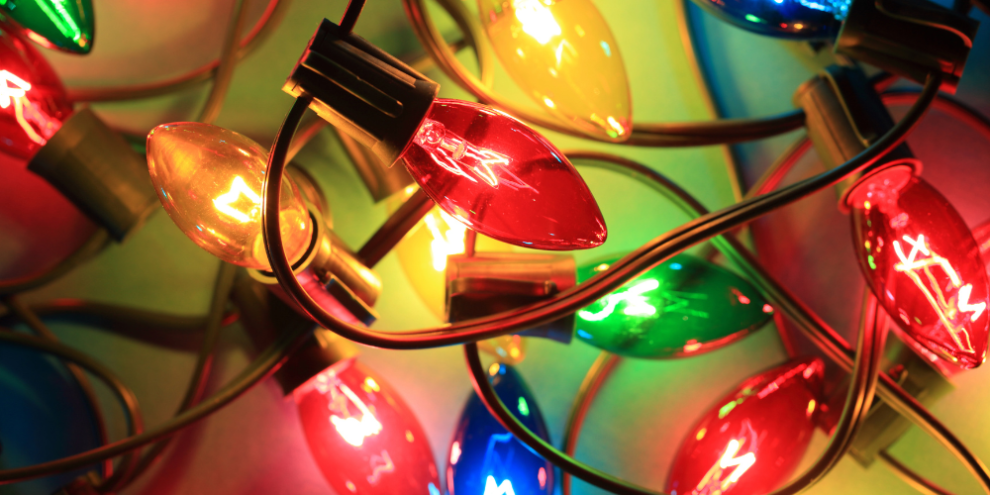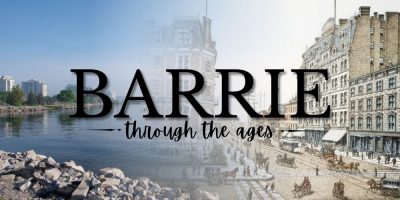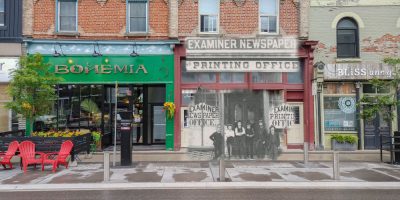
There aren't many holidays where you show off your seasonal pride with so much panache. But once December rolls around (and sometimes earlier) houses and trees are set aglow with Christmas lights in celebration of the holiday season!
The question is ... who exactly started the tradition of Christmas lights?
The First Christmas Lights: Candles
The adoption of any sort of Christmas lights started in Germany where trees were occasionally decorated with candles to celebrate the season. There are different stories of how the first candles made their way to the bows of evergreens. However, many believe it was the invention of Martin Luther, a Protestant reformer from the 16th century.
Stories say he was walking home one night when he realized how beautiful the stars looked, twinkling among the evergreens. He then proceeded to decorate his Christmas tree in candles to recreate the awe-inspiring scene for his family to enjoy.
Eventually, candles began to be replaced by small lanterns and glass balls that held candles.
The First String Of Electric Lights
Fast forward to 1882 when the inventor Edward Hibberd Johnson decorated with the first-ever string of electric Christmas tree lights.
Johnson was an associate of Thomas Edison and a big fan of Christmas. He strung together 80 red, white, and blue lightbulbs devised by Edison. Once complete, he wrapped the string of lights around a Christmas tree in his New York City townhouse at 136 East 36th St. The tree was placed on a revolving pedestal and set in his street-facing window for all to see.
As can be expected, the spectacle drew in a crowd. While local New York newspapers didn't give the publicity stunt much attention, a Detroit paper thought it worth a story.
W.A. Croffut of the Detroit Post and Tribune wrote:
“Last evening I walked over beyond Fifth Avenue and called at the residence of Edward H. Johnson, vice-president of Edison's electric company. There, at the rear of the beautiful parlors, was a large Christmas tree, presenting a most picturesque and uncanny aspect. It was brilliantly lighted with many colored globes about as large as an English walnut and was turning some six times a minute on a little pine box. There were eighty lights in all encased in these dainty glass eggs, and about equally divided between white, red and blue. As the tree turned, the colors alternated, all the lamps going out and being relit at every revolution. The result was a continuous twinkling of dancing colors, red, white and blue, all evening.
I need not tell you that the scintillating evergreen was a pretty sight - one can hardly imagine anything prettier. The ceiling was crossed obliquely with two wires on which hung 28 more of the tiny lights; and all the lights and the fantastic tree itself with its starry fruit were kept going by the slight electric current brought from the main office on a filmy wire. The tree was kept revolving by a little hidden crank below the floor which was turned by electricity. It was a superb exhibition.”
Article from Detroit Post And Tribune, 1882
RELATED: Here's where you can find amazing light displays across Simcoe County ...
The story gained a lot of traction, earning Johnson the prestigious title: "Father of Electric Christmas Tree Lights".
The lighting of the tree would become a tradition for Johnson, with more and more lights appearing each year. In 1884, the New York Times wrote:
"Mr. Johnson has been experimenting with house lighting by electricity for some time past, and he determined that his children should have a novel Christmas tree.
It stood about six feet high, in an upper room, last evening, and dazzled persons entering the room. There were 120 lights on the tree, with globes of different colors, while the light tinsel work and usual adornment of Christmas trees appeared to their best advantage in illuminating the tree."
Article from New York Post, 1884
Electric Christmas Lights Became The Norm
While Christmas lights were still too expensive for the average person, businesses began stringing up Christmas lights in their store displays by the start of the 20th century. By 1914 a 16-foot string of lights was only $1.75. Still expensive for the time, but much less than a string of 16 bulbs for $12 ($350 today) in 1900.
By 1930, prices had become affordable enough that coloured electric Christmas lights became the norm.
Even still, using lights as house decoration was still a few decades away. A few bulbs on your tree is one thing, but coating your house in lights was still an expensive dream for most.
By the mid-1950s outdoor lights were becoming more and more common all over the world, from Rockefeller Centre in New York to suburban neighbourhoods in Toronto.
Nowadays, outdoor light displays can be seen on almost every block and we wouldn't have it any other way!










